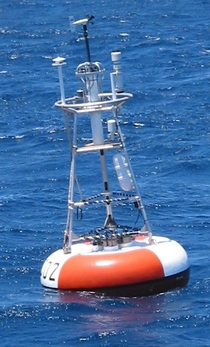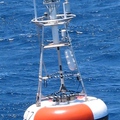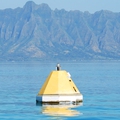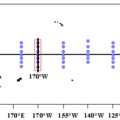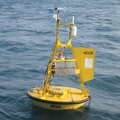TAO 0°, 170°W
Upwelling in the equatorial Pacific leads to enhanced productivity and degassing of CO2 across a region ranging from the coast of South America to past the international dateline. The vast area affected makes this region a significant component of the global biogeochemical cycle. It is estimated that as much as 70% of the interannual variability in the net global oceanic uptake of atmospheric CO2 comes from changes in the Equatorial Pacific upwelling associated with climate variations called El Niño and La Niña. The PMEL carbon group has mounted sensors on moored buoys within the TAO Array to provide high resolution time-series measurements of atmospheric boundary layer and surface ocean CO2 partial pressure (pCO2) in an attempt to quantify the variations in equatorial outgassing. This work is supported by NOAA's Ocean Observing and Monitoring Program.
Please visit the TAO Website for more information on the Equatorial Moorings.
Finalized Data availability: National Centers for Environmental information NCEI.
Plots of surface water and atmospheric CO2:

